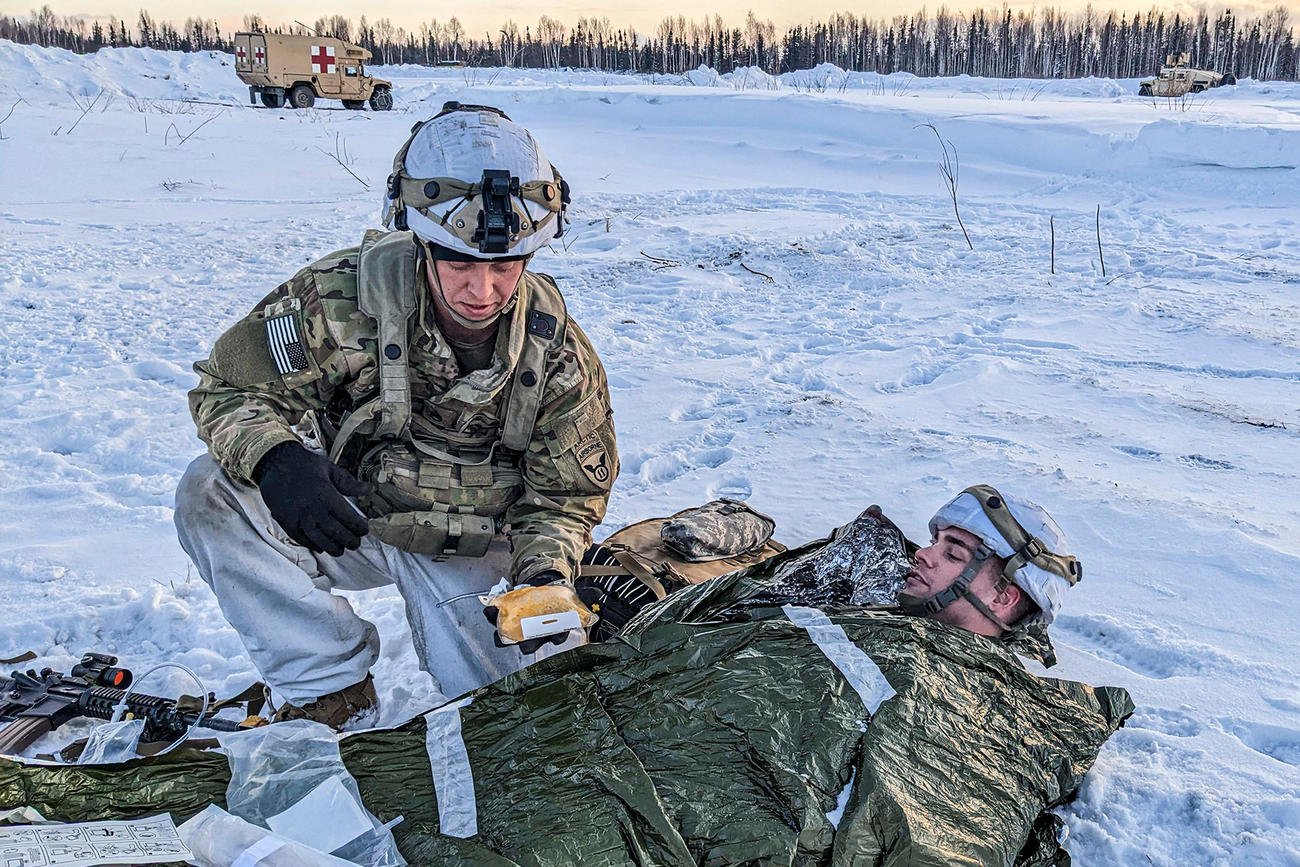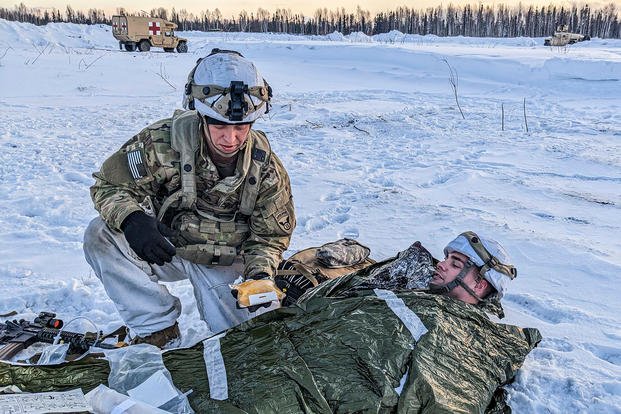

Combat medics and corpsmen may soon carry a lifesaving blood product that their counterparts in the special operations community have had for more than a decade.
The U.S. Food and Drug Administration granted an emergency use authorization in late August for a freeze-dried plasma powder made by Octapharma USA that can sustain injured personnel who are internally hemorrhaging or bleeding out from a wound.
The plasma, known as octaplasLG Powder, can be carried at room temperature and used in emergencies where whole blood or fresh blood plasma, which require refrigeration, are not available or practical.
Read Next: US Is Sending More Troops to the Middle East as Violence Rises Between Israel and Hezbollah
“[It gives] medical commands and frontline providers added capabilities when facing possible shortages of traditional blood plasma in austere locations across the world,” Kendra Lawrence, program manager for Warfighter Protection and Acute Care, or WPAC, at the U.S. Army Medical Materiel Development Activity, said in a press release.
Army Special Forces and the 75th Ranger Regiment have had access to French-made freeze-dried plasma since 2011, while Marine Corps Raiders, Navy SEALs and Air Force special operations troops received that product between 2016 and 2017.
But the limited supply of that plasma, known as French lyophilized plasma, or FLyP, prevented widespread distribution to regular forces.
The FDA’s authorization of octaplasLG allows the military services to acquire it and the Defense Health Agency to support that acquisition, according to DHA spokesman Peter Graves.
“Dried plasma serves as an adjunct to whole blood at the point of need, especially in austere locations where no other blood product is available,” Graves said in an email to Military.com on Sept. 11. “Transfusion of dried plasma at the point of need increases a casualty’s chances of survival and provides a ‘bridge to transfusion’ of whole blood.”
French and German forces have carried freeze-dried plasma on the battlefield for years but, because the FDA had not approved the products, U.S. forces could not use them in Iraq or Afghanistan, although they could be used — and were — to treat American casualties cared for by French or German physicians or medics.
Widespread access to freeze-dried plasma has been considered a top priority for military emergency medical experts over concerns that future supply lines and logistics support could stretch thousands of miles in the next conflict, delaying evacuations and medical care.
“[Freeze-dried plasma] is a more easily transportable plasma product with the same hemostatic properties of [fresh frozen plasma], can be pushed further forward to locations on the battlefield, and reduce the operational medical logistics burden involved in the processes of collection, storage and resupply of plasma,” Graves said.
OctaplasLG Powder and FlyP are stopgaps when whole blood, fresh frozen plasma or liquid plasma are in short supply, according to Army Maj. Andrea Mountney, WPAC’s military deputy project manager.
“Each passing second after a service member is wounded or injured increases the complications caused by combat trauma. The longer it takes to begin blood replacement therapy, the higher the chances of mortality,” Mountney said in a press release.
According to Octapharma USA, octaplasLG Powder is made from plasma obtained at licensed blood collection centers in the U.S. and undergoes a “solvent/detergent treatment manufacturing process” to destroy any illness-causing bacteria.
While clinical trials have not been conducted on octaplasLG Powder, the company has submitted safety and efficacy information based on similar products it produces, according to the company.
No date has been set yet for fielding, but Graves said that efforts are underway to get the product out to medics and corpsmen.
“Initial planning, including training approach, is underway with the military departments and combatant commands,” Graves said.
Related: Army Proposes New Training to Replace Combat Lifesaver Course
